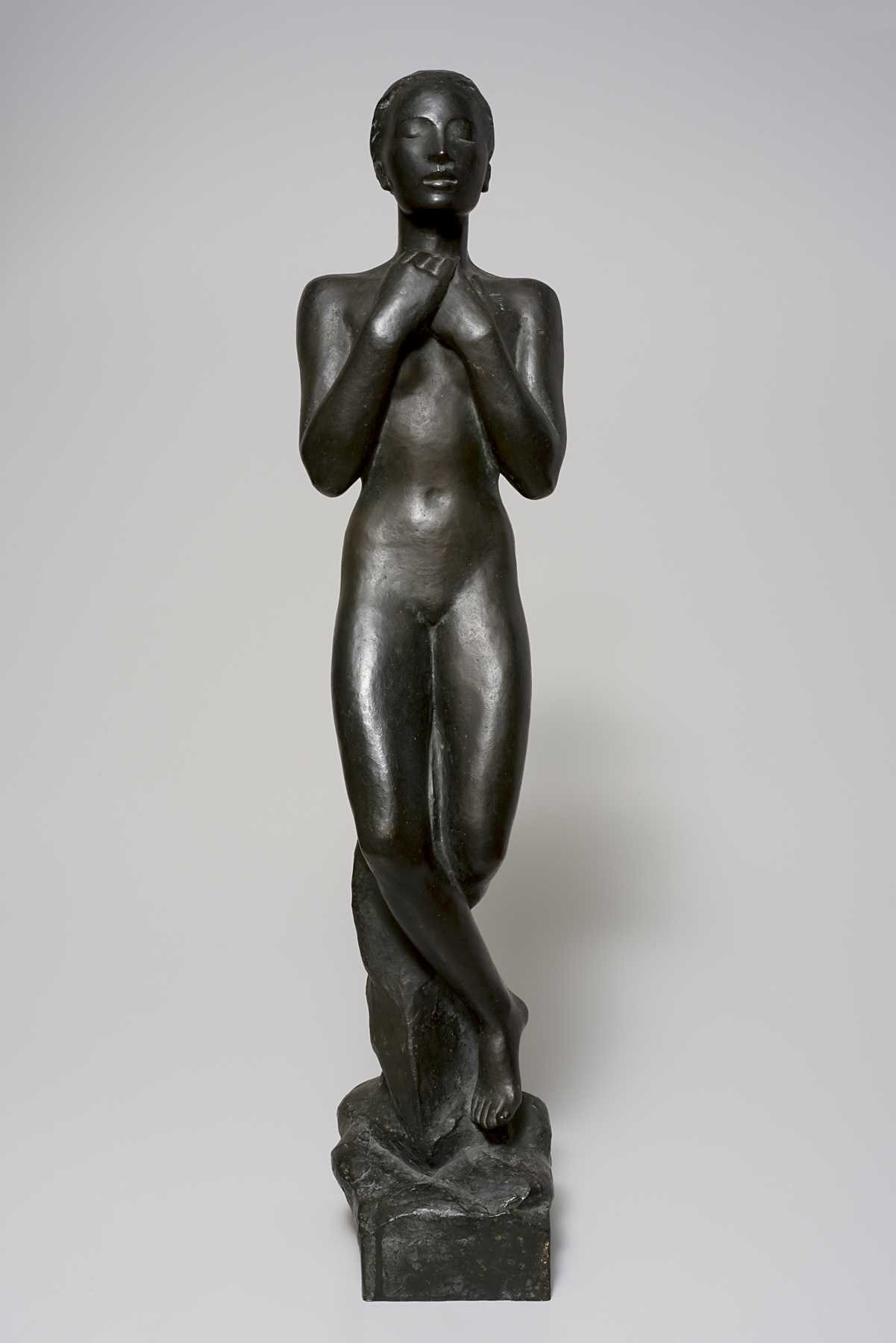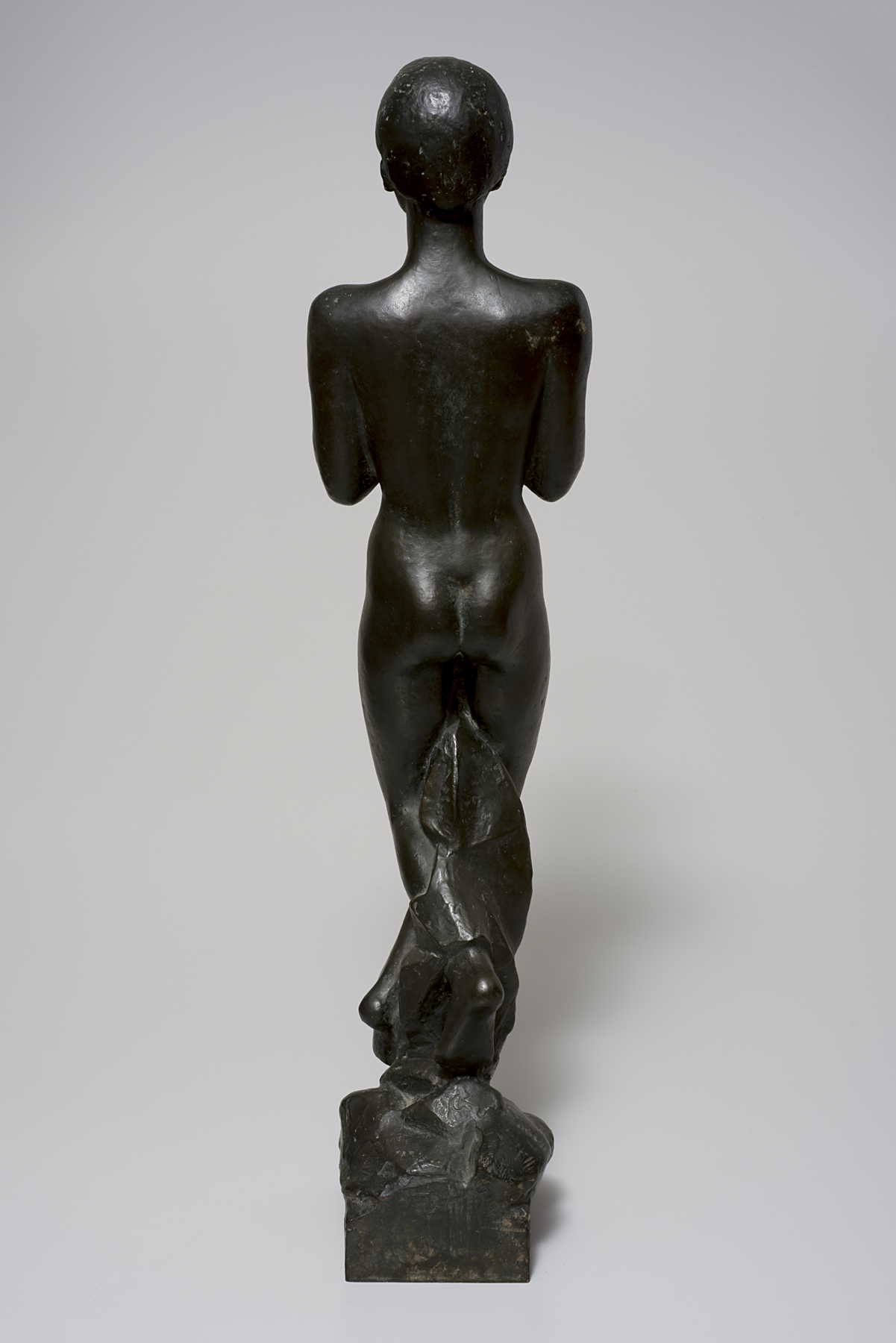Resurrection, Georg Kolbe
Artwork Overview
Georg Kolbe, artist
1877–1947
Resurrection,
1920
Where object was made: Germany
Material/technique: bronze
Dimensions:
Object Height/Width/Depth (Height x Width x Depth): 76.2 x 15.2 x 16.5 cm
Object Height/Width/Depth (Height x Width x Depth): 30 x 6 x 6 1/2 in
Weight (Weight): 40 lbs
Object Height/Width/Depth (Height x Width x Depth): 76.2 x 15.2 x 16.5 cm
Object Height/Width/Depth (Height x Width x Depth): 30 x 6 x 6 1/2 in
Weight (Weight): 40 lbs
Credit line: Museum purchase: A. D. Weaver Fountain Court Fund
Accession number: 1959.0049
Not on display
If you wish to reproduce this image, please submit an image request





